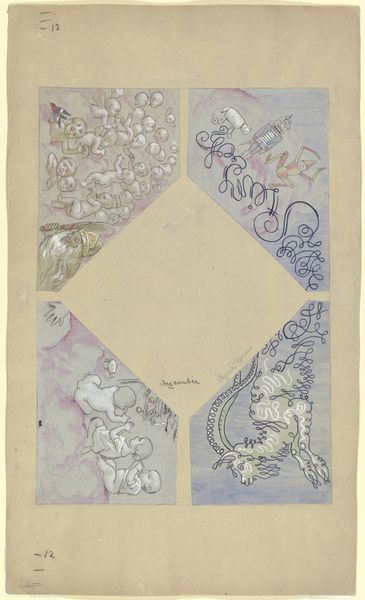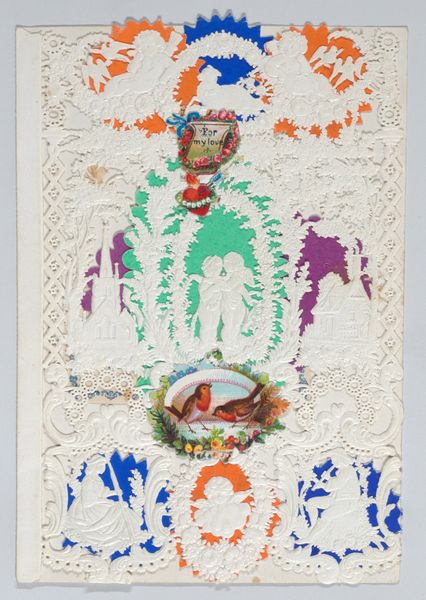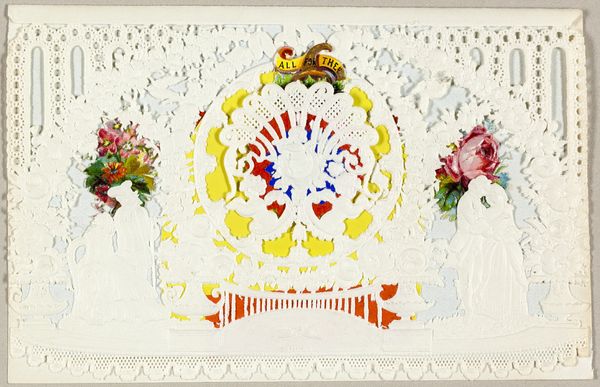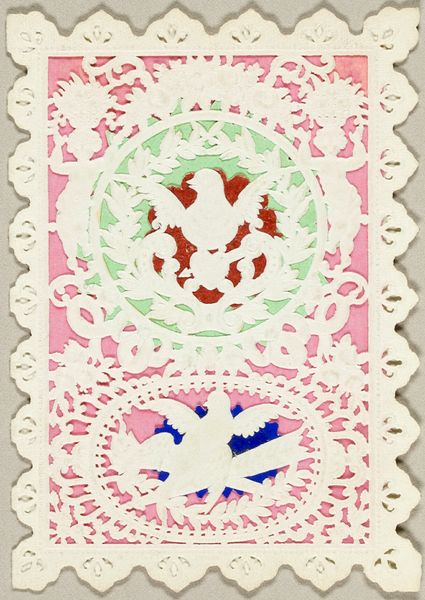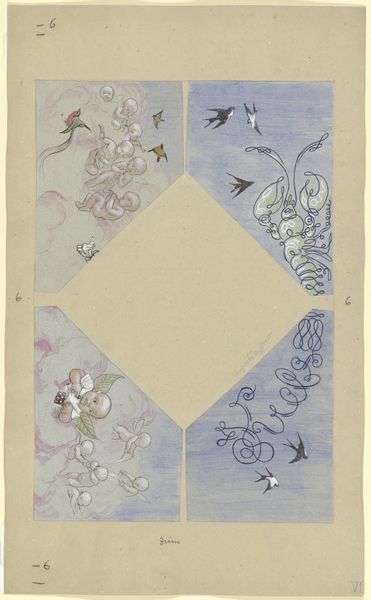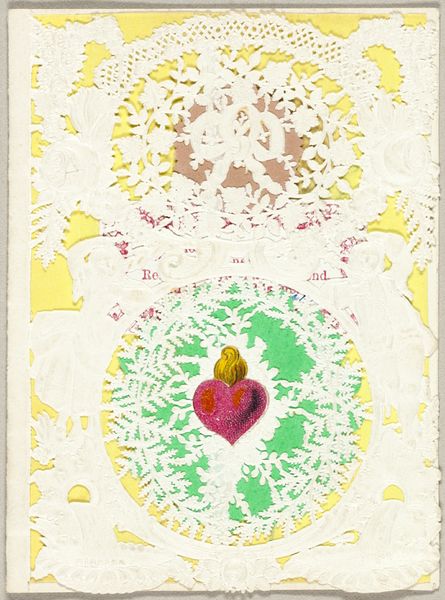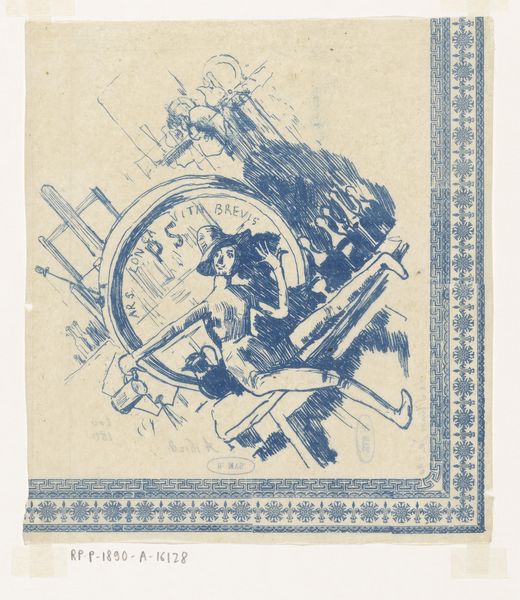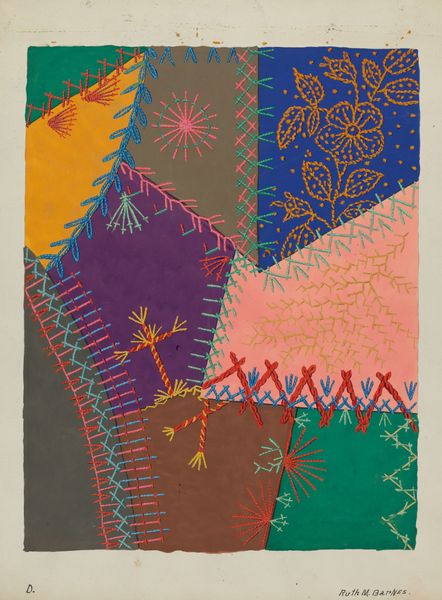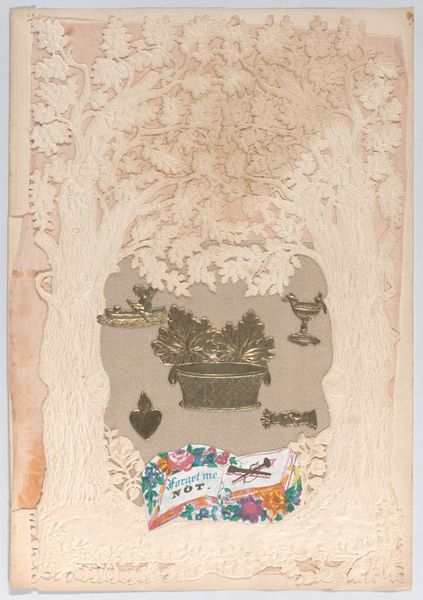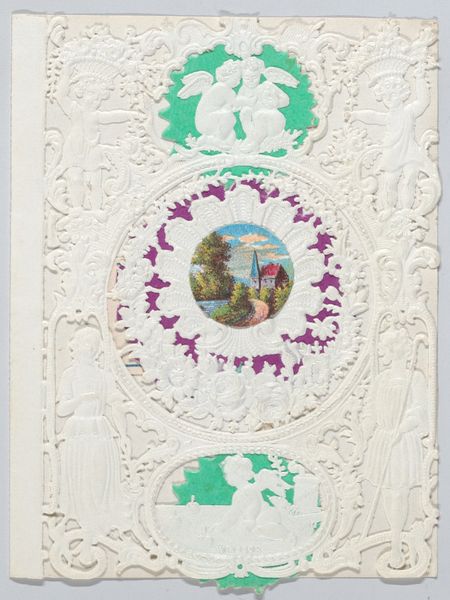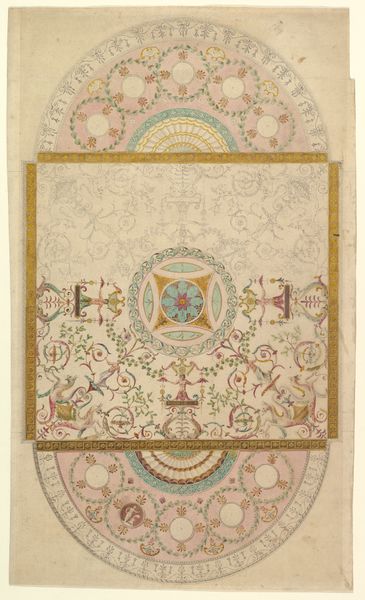
Dimensions: 97 × 73 mm (folded sheet)
Copyright: Public Domain
Curator: Let’s examine this “Untitled Valentine (Vase of Flowers)” from the 1850s. Meek’s construction presents layered paper cuts. Editor, what is your first impression? Editor: Well, it looks quite intricate. All that cut paper—almost like lace! It seems so delicate. How was something like this even made? Curator: Precisely. Consider the labor invested. In the 1850s, this kind of meticulous handwork spoke volumes about available leisure and skill. The value isn’t just in the aesthetic but in the demonstrated process of production, the material labor manifested as a signifier of class, courtship, and sentimental economy. Think about the economic shift at the time; How did industrial production make handcrafts more visible and appreciated as specialized skills? Editor: I hadn't thought about that before. It feels like there is a bit of craft but then some "higher art" motifs thrown in as well. How can those boundaries blur our experience and perception? Curator: Good point! The layering, the cutouts… it disrupts traditional ideas about “fine art.” It challenges us to consider where craft ends and art begins and perhaps where it shouldn’t even be defined by those separations. Notice the flowers and ribbon on the upper layer with a more refined arrangement in the composition. And, then consider it was meant to be discarded as something sentimental but perhaps now elevated with its presence here. The consumption and commodification of emotions using materiality... What do you take away? Editor: So it's about considering both the labor and skill that went into making it, and also thinking about how it was used, its original context. I guess I see it as more than just a pretty valentine now. Curator: Exactly! We see it as a testament of skill that challenges how we assign value to material expressions and human labor.
Comments
No comments
Be the first to comment and join the conversation on the ultimate creative platform.
